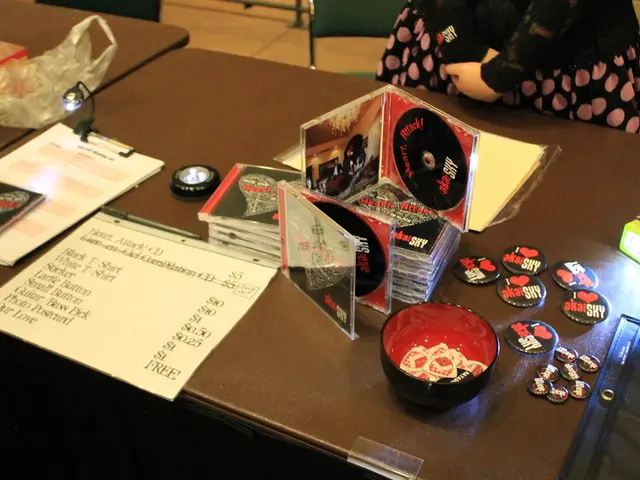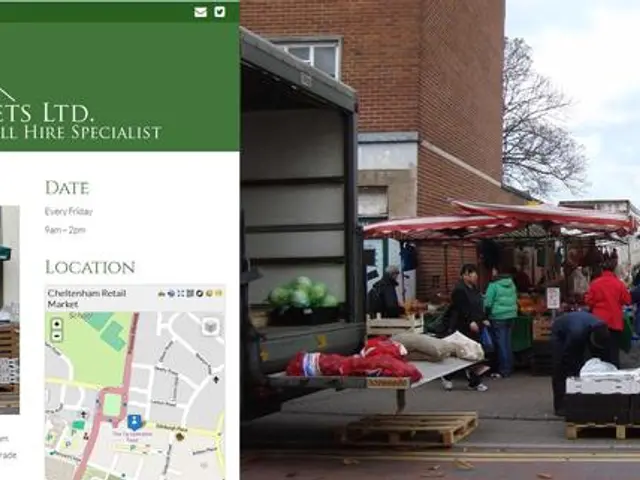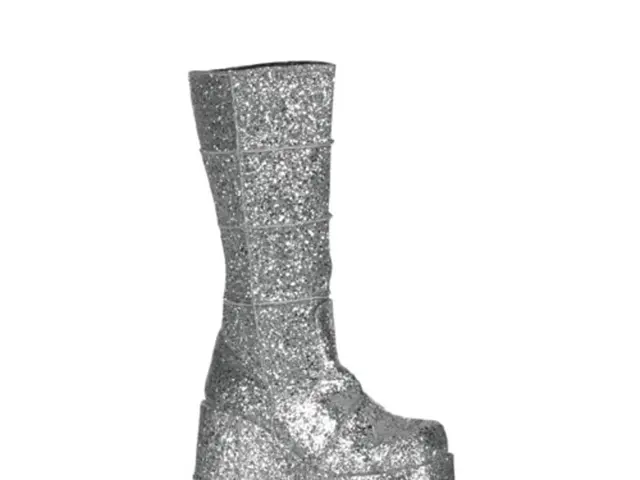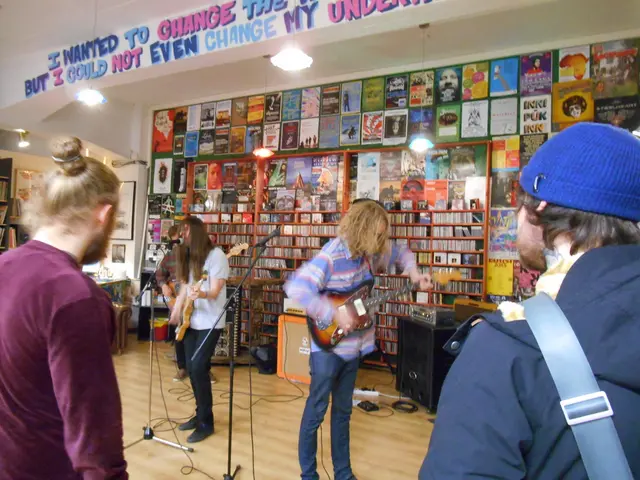Strategies for crafting effective Instagram advertising for increased sales
Instagram, the popular photo and video-sharing social media platform, has become an essential tool for businesses and content creators seeking to promote their brand, products, or services. One such method is through Instagram ads, paid posts designed to boost visibility and engagement.
The cost of running Instagram ads varies, with average ranges falling within specific parameters. According to recent 2025 data, the **Cost Per Click (CPC)** typically ranges from $0.20 to $2.00, while the **Cost Per 1,000 Impressions (CPM)** can range from $6.00 to $13.00, with an average near $6–$10. The **Cost Per Lead (CPL)** is usually between $3 and $15, influenced by industry and lead form complexity. The **Cost Per Acquisition (CPA)** for e-commerce tends to be roughly $20 to $50, with higher costs for Software as a Service (SaaS) products. The **Cost Per Engagement** is about $0.06 on average, and the **Cost Per Install** for apps is approximately $2.00.
Several key cost components contribute to the overall expense of Instagram advertising. These include the target audience, ad objective, ad format and creative, bidding model, industry, seasonality and competition, and ad management services. For instance, narrower or more competitive audiences tend to increase costs, while mobile-optimized, relevant, and fresh creative content can reduce costs and improve performance.
Instagram Reel ads, a new ad format lasting up to 30 seconds, can be creatable only on a desktop. Instagram Story ads appear between users' stories and can be managed through the Facebook Ads application. Boosting posts is useful for increasing post visibility and engagement, while Instagram Ads Manager is a tool to manage advertising guidelines on Instagram, as it belongs to the same company as Facebook. Linking an Instagram account with a Facebook page is necessary to run Instagram ads.
A branding campaign on Instagram typically lasts for three months or more, and Instagram analytics can be used to track results from conversion-focused campaigns. Instagram Carousel ads allow for up to 10 different products or stories in a single ad with their own images or videos, links, headlines, and descriptions.
To control costs, it is recommended to target warm audiences first for cheaper conversions, keep the click-through rate above 1% to avoid wasting budget, refresh ads every 7–10 days to maintain performance, and design ads mobile-first to improve engagement and reduce wasted spend.
These figures are averages and benchmarks; actual advertising costs on Instagram depend heavily on your specific campaign setup and goals. For businesses seeking to leverage Instagram advertising, understanding these costs and components can help optimise campaigns for maximum impact.
[1] Hootsuite. (2021). Instagram Advertising Benchmarks 2021. Retrieved from https://blog.hootsuite.com/instagram-advertising-benchmarks-2021/
[2] AdEspresso by Hootsuite. (2020). Instagram Advertising Benchmarks 2020. Retrieved from https://adespresso.com/academy/instagram-advertising-benchmarks-2020/
[3] WebFX. (2021). How Much Does Instagram Advertising Cost? Retrieved from https://www.webfx.com/blog/social-media/how-much-does-instagram-advertising-cost/
[4] Sprout Social. (2021). Instagram Advertising Benchmarks. Retrieved from https://sproutsocial.com/insights/instagram-advertising-benchmarks/
Gadgets such as smartphones and computers are often used to access technology platforms like Instagram, which allows users to effortlessly browse entertainment content, engage with social-media influencers, and even discover new products through business promotions or ads. Understanding the Cost Per Click (CPC), Cost Per 1,000 Impressions (CPM), Cost Per Lead (CPL), Cost Per Acquisition (CPA), Cost Per Engagement, and Cost Per Install for these Instagram ads is essential for businesses to effectively plan their campaigns and ensure maximum return on investment.






